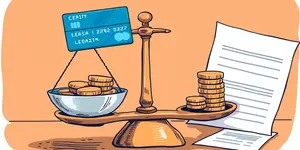
Missing a payment might seem like a small lapse, but it can spiral into unexpected charges, stress, and lasting credit damage. In early 2025, millions of Americans discovered they had fallen behind on bills—some unaware until relief periods expired. By keeping your eye on calendars and statements, you can avoid damaging your credit score and keep more money in your pocket.
Every missed payment can trigger a late fee, penalty interest rates, and a negative credit report entry if overdue by 30 days or more. In 2025, banks collect roughly $14 billion annually in credit card late fees, averaging $30.50 per incident and reaching up to $41 for major issuers. Imagine saving hundreds of dollars each year simply by staying organized.
Beyond the immediate financial hit, repeated late payments can hinder your ability to secure future loans, rent housing, or even lower interest rates. By adopting proactive strategies, you not only avoid fees but also protect your credit score from damage.
While credit card delinquency rates have edged slightly down to 3.05%, other forms of consumer debt—like auto loans and student loans—have seen five-year highs in missed payments. The expiration of pandemic-era forbearance on federal student loans in early 2025 led to a spike in defaults, leaving many borrowers unprepared.
Experts warn that confusing communication from financial institutions and changing billing cycles are leading causes of missed due dates. Without clear notices, even responsible payers can slip through the cracks.
Late fee limits result from federal rules, state regulations, and individual issuer policies. Under the CARD Act, issuers must disclose fee structures clearly, but legal battles over caps continue. A federal court recently overturned an $8 maximum late fee rule, restoring the typical $30–$41 range.
State laws can further restrict fees on utilities, payday loans, and other obligations. To find your state’s limits, check resources from your attorney general or consumer protection agency.
The fallout from one missed payment can multiply quickly:
Student loan borrowers in states like Vermont and Connecticut face default rates nearing 14.7%, highlighting how quickly protections can vanish without timely payments.
Proactive organization is your best defense. Consider these tactics:
If you foresee difficulty meeting a payment, reach out immediately to your creditor. Some issuers offer hardship programs or may contact the creditor before deadlines to request a one-time fee waiver.
Regulatory efforts around late fee caps continue to shift. Although recent rulings restored the standard $30–$41 credit card late fee, the CARD Act still mandates transparent disclosures and notice procedures. Understanding these rules empowers you to dispute improper charges and assert your rights.
State-specific protections may give you additional leeway, especially for utility bills or student loans. Investigate your state attorney general’s guidelines to ensure you benefit from every available regulation.
You hold the key to avoiding late fees and preserving financial health. By integrating automated systems, digital reminders, and regular statement checks, you can transform a potentially stressful chore into a seamless routine. Establish these habits now to reap lasting benefits—greater savings, a stronger credit profile, and peace of mind in your finances.
Remember, small actions today can prevent sizable fees tomorrow. Embrace organization and take control of your financial journey—because staying on top of due dates is the simplest way to protect your future.
References













